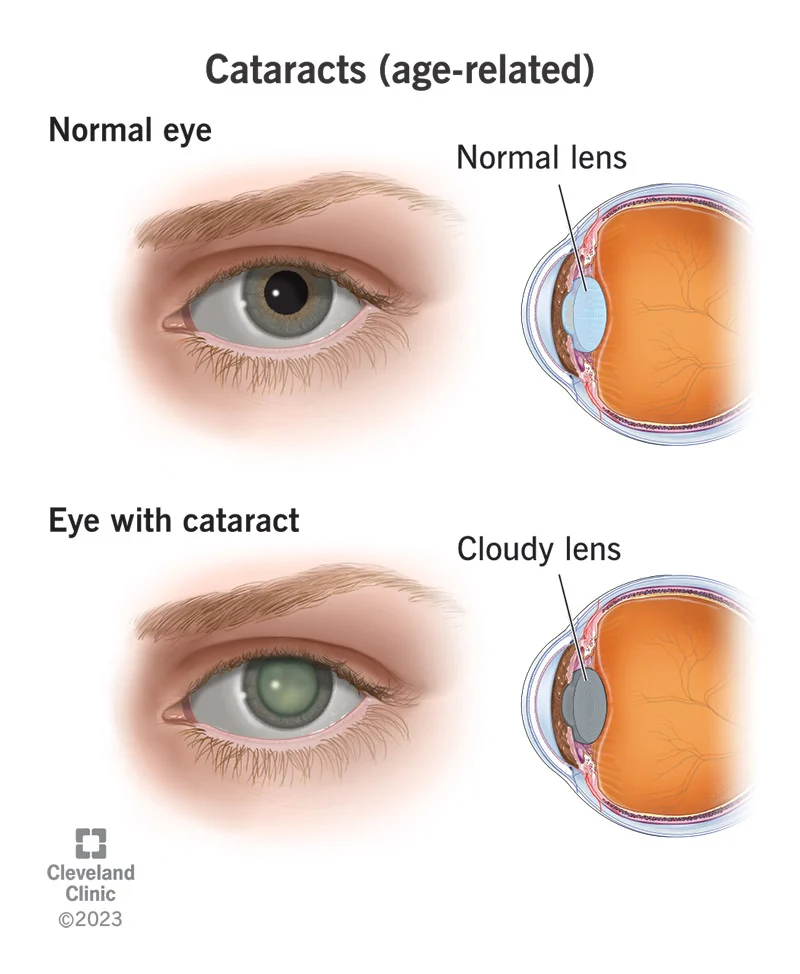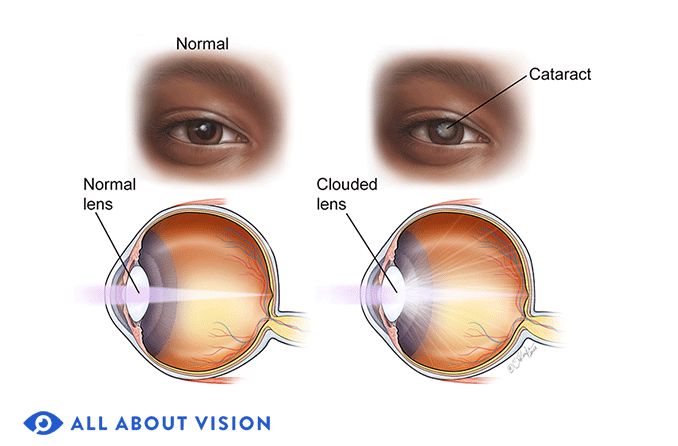What are cataracts?

Cataracts are cloudy areas that form on the lens of your eye.
Your lens’s proteins degrade as you age, resulting in hazy areas that impair your vision.
You can experience the sensation of staring out of a dirty window. Your vision gets worse with time. You can struggle to complete everyday duties. Age-related cataracts are the most prevalent type of the ailment, and doctors view them as an inevitable aspect of aging.
But no need to have to put up with vision deteriorating. To remove the cataracts and improve your vision, ophthalmologists can perform surgery.

Types of cataracts
Cataracts can take many different forms. It is mainly focuses on cataracts brought on by aging. Other varieties of cataract include:
child’s cataracts. Children and infants are affected by pediatric cataracts. Cataracts can develop either before or after birth in infants, or they might be present at birth (congenital). Though they frequently run in families, pediatric cataracts can also be brought on by eye injury or other eye diseases. Pediatric cataracts in infants and young children must be treated right once to avoid issues like amblyopia (lazy eye).
cataracts from trauma. These cataracts develop when your eye is hurt. Because the components surrounding the lens may also need repair, treatment for this type is more challenging.
second-order cataracts. These are hazy blotches that develop on the membrane or lens capsule that surrounds your lens. Posterior capsular opacification is another name for this disorder. It is a frequent but manageable side effect of cataract surgery.
At what age do cataracts usually start?
Around the age of 40, the proteins in the lens of your eye begin to degrade. However, symptoms often don’t appear until 60 or later in life. You might experience symptoms earlier if you have a medical condition like diabetes.
What signs of cataracts ??
Some cataract signs include:
1). misty, fuzzy, hazy, or filmy vision.
2). Alterations in how you see color (colors may appear faded or less vibrant).
3). sensitivity to strong light from lamps, headlights, or the sun.
4). Halos or streaks that appear around lights are examples of glare.
How is a cataract identified?
Cataracts are identified by ophthalmologists and optometrists through a thorough eye examination. Your healthcare professional will carefully check your eyes to detect cataracts and determine their severity. Healthcare professional will also inquire about eyesight, medical history, and whether finding it difficult to perform daily duties because of vision isn’t what it used to be.
Examinations to detect Cataract
Following tests
- Slit lamp test.
2. Test of visual acuity.